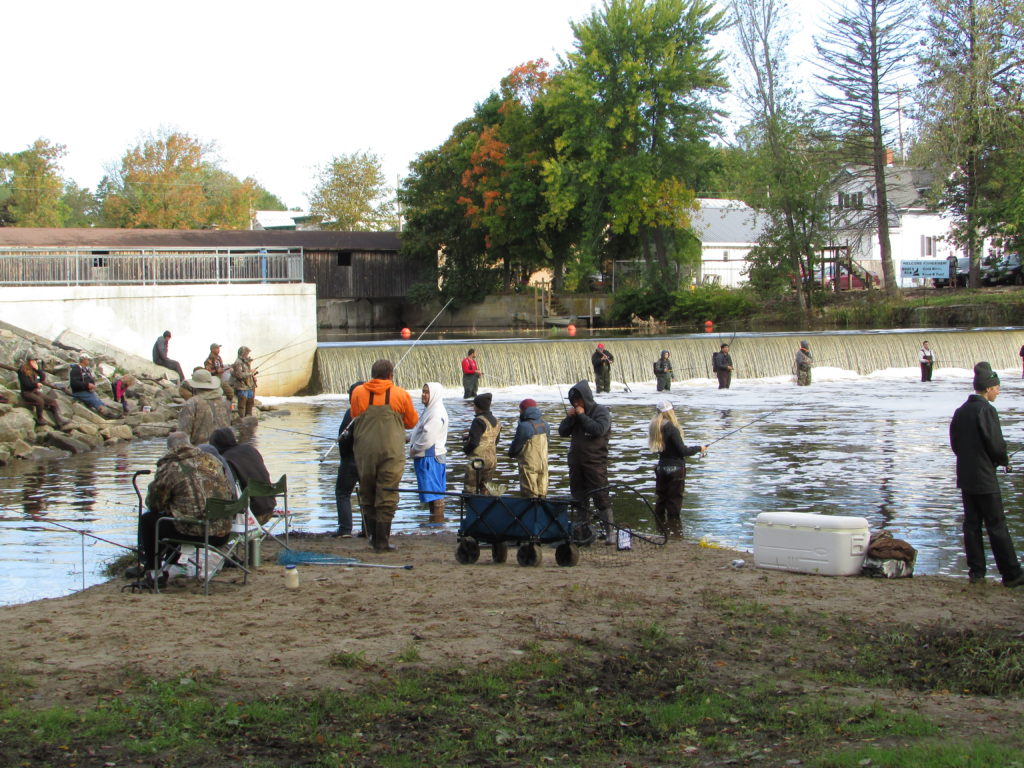FOR IMMEDIATE RELEASE: Jan. 15, 2021
Contact: Sean Strom, DNR Environmental Toxicologist
Sean.Strom@wisconsin.gov or 608-220-4769
Elizabeth Goodsitt or Jennifer Miller, DHS Communications Specialists
DHSMedia@dhs.wisconsin.gov or 608-266-1683
New Smelt Consumption Advisory for Lake Superior
Elevated Levels of PFAS Found in Rainbow Smelt
A new fish consumption advisory for smelt in Lake Superior is now in effect. / Photo Credit: iStock/KirsanovV
MADISON, Wis. – Based on recent sampling results, the Wisconsin Department of Natural Resources (DNR) and the Department of Health Services (DHS) are recommending a PFAS-based fish consumption advisory for Lake Superior.
Due to the high levels of PFOS found in the samples, the DNR and DHS are updating the recommended rainbow smelt consumption advisory from an unrestricted amount to one meal per month for Lake Superior.
The sampling completed by the DNR found elevated levels of PFAS (per- and polyfluoroalkyl substances), particularly the compound PFOS, in rainbow smelt in Lake Superior. PFAS are a group of over 5,000 human-made chemicals used for decades in numerous products, including non-stick cookware, fast food wrappers and stain-resistant sprays.
These legacy contaminants have made their way into the environment in a variety of ways, including spills of PFAS-containing materials, discharges of PFAS-containing wastewater to treatment plants and certain types of firefighting foams.
These legacy contaminants have made their way into the environment in a variety of ways, including spills of PFAS-containing materials, discharges of PFAS-containing wastewater to treatment plants and certain types of firefighting foams.
The risk of health problems increases with the amount of contaminated fish you eat. Following this advisory will help protect you from excess PFAS exposure found in fish. The advisory could change in the future as the DNR and DHS continue to learn more about the health risks from eating fish caught from this area and more fish data become available.
As part of the DNR’s statewide PFAS monitoring efforts to monitor fish tissue and water chemistry at select sites around the state, smelt were collected from two locations in Lake Superior in 2019 approximately 30 miles apart at sites near the Apostle Islands and off Port Wing. PFAS was detected in samples from both locations.
Rainbow smelt are a small, silver fish that are non-native to Lake Superior. Some anglers will catch smelt through the ice, but the majority of smelt harvest occurs in the springtime as the fish migrate into nearshore areas to spawn.
“The smelt migration run starts as spring arrives and winter ice cover dissipates which creates a popular local tradition of harvesting smelt for fish fries,” said Brad Ray, Lake Superior Fisheries Unit Supervisor. “It’s important for consumers to understand the potential risks associated with this new advisory.”
Fish Tissue Results
In mid-December, the DNR received results from the contaminant samples taken from Lake Superior. Rainbow smelt, a popular sport fish and prey species for many predator fish and various bird species, had a high level of PFOS (perfluorooctane sulfonate), one of the many types of PFAS contaminants.
“Eating fish that have high levels of PFAS may increase your risk for certain health effects,” said Dr. Jonathan Meiman, Chief Medical Officer and State Epidemiologist for Occupational and Environmental Health at the Wisconsin Department of Health Services. “Limiting your exposure by choosing fish that are low in PFAS is the best way to reduce your risk while still maintaining the health benefits of fish consumption.”
Some health risks associated with PFOS, one of the thousands of PFAS compounds, include lower birth weight, possible links to increased risk of kidney and testicular cancer, harm to the immune and reproductive systems, increased cholesterol levels, and altered hormone regulation and thyroid hormones.
The DNR also received sample results from bloater chub, cisco/lake herring, lake whitefish, lake trout, and siscowet lake trout in Lake Superior and crappie, yellow perch, channel catfish, carp, northern pike, walleye, and musky from the St. Louis River. The PFOS levels found in those fish do not warrant a consumption advisory change at this time.
Currently, the DNR and DHS are unaware of any other PFAS-based consumption advisories for other fish species in the Great Lakes.
For consumption advice for other Great Lakes fish species based on toxic substances, such as PCBs (polychlorinated biphenyls) or mercury, please refer to the statewide safe-eating guidelines. Additional consumption advice can be found on the DNR’s fish consumption webpage.
To learn more about PFAS and fish, visit the DNR’s PFAS webpage. For more information on PFAS and associated human health effects, visit the DHS’s PFAS webpage. |
